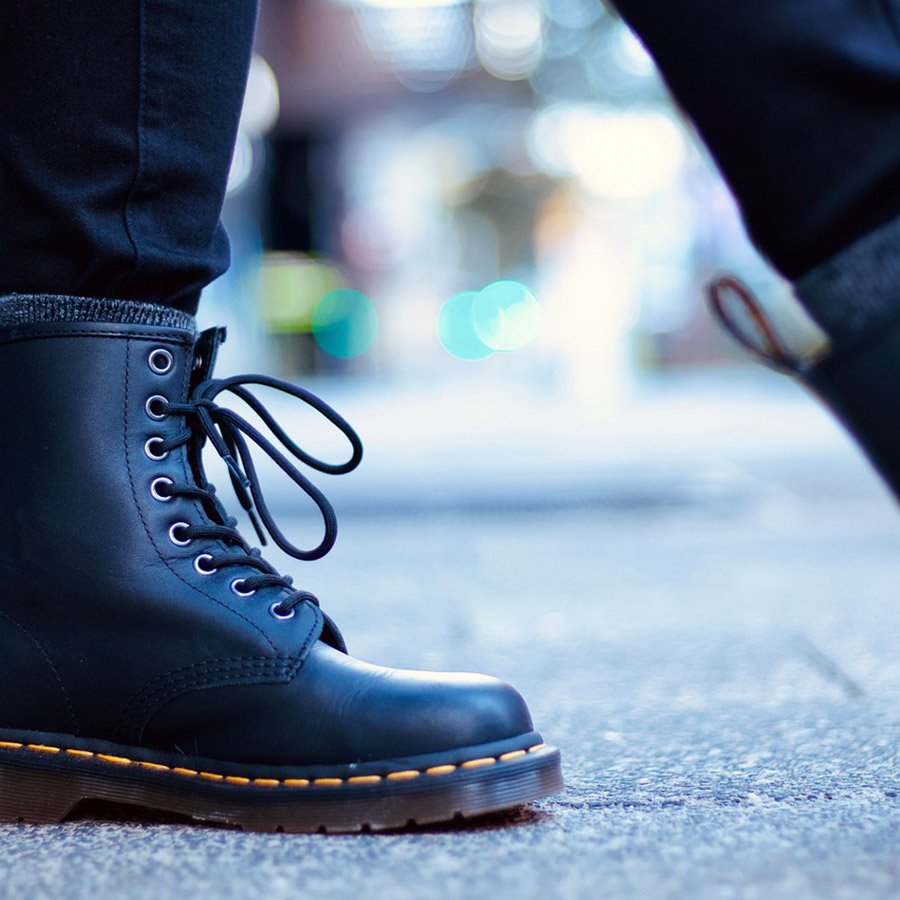Are Doc Martens Good for Hiking? Find Out!
Hiking enthusiasts, fashion aficionados, and curious adventurers alike have pondered a burning question: Are Doc Martens good for hiking? Known for their robust build and iconic style, these boots have graced the feet of workers and fashionistas for decades. But do they hold up when faced with rugged trails and strenuous hikes? Let’s delve into the history, features, and practicality of Doc Martens to uncover the truth!
Are Doc Martens Good for Hiking?
When you think of hiking, images of specialized gear and sturdy, trail-ready boots probably come to mind. Typically, Doc Martens might not be the first choice. But could these stylish boots double as hiking gear? Given their reputation for durability and comfort, it’s a question worth exploring. Let’s break down the critical aspects to see if Doc Martens can truly handle the demands of a hike.
Hiking requires footwear that can provide support, withstand rough terrain, and keep your feet comfortable over long distances. Doc Martens certainly look the part, with their thick soles and robust leather construction. However, looks can be deceiving. We need to evaluate their performance on trails to give a definitive answer.
Understanding the pros and cons of using Doc Martens for hiking can help you make an informed decision. Whether you’re planning a casual stroll in the woods or a more challenging trek, the right footwear is crucial for an enjoyable experience. Let’s dive deeper to see if Doc Martens fit the bill.
Also read: Are Blundstones Good for Hiking? Discover the Truth!

The History of Doc Martens: From Work to Fashion
Doc Martens, originally designed as work boots, have a rich history dating back to post-war Germany. In 1945, Dr. Klaus Märtens, a German army doctor, crafted a unique air-cushioned sole to aid his recovery from a foot injury. This innovative design quickly caught the attention of British shoemakers, leading to the first pair of Doc Martens being produced in the UK in 1960.
The boots became popular among working-class communities, admired for their durability and comfort. Over time, they transitioned from practical workwear to a fashion statement, embraced by various subcultures including punks, goths, and grunge enthusiasts. Their iconic design and reputation for longevity have made them a staple in the fashion world.
Today, Doc Martens are more than just a symbol of rebellion and style; they are also known for their quality craftsmanship. But as they have evolved from work boots to fashion icons, the question remains: are they still suitable for the demanding conditions of hiking?
Key Features of Doc Martens Boots
Doc Martens are renowned for several key features that contribute to their popularity. One of the most notable is the air-cushioned sole, which offers excellent shock absorption and all-day comfort. This feature was revolutionary at the time of its inception and remains a central selling point for the brand.
The boots are typically made from high-quality leather, which provides durability and a distinctive aesthetic. This leather construction, while robust, can also be quite stiff initially, requiring a break-in period. Once broken in, the leather molds to your feet, offering a custom fit that many wearers swear by.
Another significant feature is the Goodyear welt construction, which involves stitching the upper part of the boot to the sole. This method not only enhances durability but also makes the boots more water-resistant. However, how do these features translate to performance on hiking trails? Let’s explore further.
How Comfortable Are Doc Martens for Long Walks?
Comfort is a crucial factor when considering footwear for long walks and hikes. Initially, Doc Martens can be quite stiff and may cause discomfort until properly broken in. This break-in period can vary from a few days to a few weeks, depending on the frequency of wear and individual foot shape. Once broken in, the boots are known to offer a high level of comfort due to their air-cushioned soles.
For long walks, particularly on flat or urban terrain, Doc Martens can perform quite well. The shock-absorbing soles help reduce foot fatigue, and the leather uppers provide a snug fit over time. However, hiking often involves uneven and rocky paths, necessitating footwear that offers additional ankle support and flexibility.
While Doc Martens do offer some degree of ankle support, they may not be as flexible as traditional hiking boots. This could be a potential drawback for hikers needing to navigate tricky terrain. Therefore, while they can be quite comfortable for general walking, their suitability for long, strenuous hikes is debatable.
Also read: Are Duck Boots Good for Hiking? Discover the Details!

Traction and Grip: Can Doc Martens Handle Trails?
Traction and grip are essential for hiking footwear to prevent slips and falls on varying surfaces. Doc Martens come with a distinctive rubber sole that provides decent grip on flat and mildly uneven surfaces. The soles are designed with a pattern that offers some traction, especially in urban settings.
However, the grip offered by Doc Martens may not be sufficient for more challenging trails. Wet rocks, muddy paths, and steep inclines require specialized treads designed to maximize contact and prevent slipping. Traditional hiking boots typically feature deeper lugs and more aggressive tread patterns to handle such conditions.
While Doc Martens can manage light, urban hikes, they might struggle on more demanding trails. The relatively shallow tread pattern of Doc Martens’ soles may not provide the necessary grip for challenging terrains, making them less reliable for serious hiking adventures.
Durability: Will Doc Martens Withstand Hiking?
Durability is one of the hallmarks of Doc Martens, with their rugged construction and high-quality materials. The thick leather uppers and robust rubber soles are designed to withstand significant wear and tear, making them a long-lasting choice for everyday wear. This durability often extends to light hiking conditions as well.
However, the demanding nature of hiking trails can test even the toughest footwear. Sharp rocks, constant flexing, and exposure to the elements require boots to be incredibly resilient. While Doc Martens are built to last, their construction is more suited to urban environments and moderate wear rather than rugged, off-road conditions.
For occasional, light hikes, Doc Martens may hold up quite well. But for frequent, intensive hiking, traditional hiking boots specifically designed for such conditions will outlast and outperform Doc Martens. The latter is built to endure, but perhaps not in the specific ways required for hardcore hiking.
Waterproof or Not: Doc Martens in Wet Conditions
Waterproofing is another crucial aspect when selecting hiking boots, as wet feet can lead to discomfort and even blisters. Traditional Doc Martens are not fully waterproof, although their leather construction and Goodyear welt do offer some resistance to moisture. Light rain or puddles might not be a problem, but heavy rain or stream crossings could pose a challenge.
There are waterproof versions of Doc Martens available, designed to provide better protection against wet conditions. These models feature additional waterproofing treatments and, in some cases, specialized linings. However, even with these enhancements, they might not match the waterproof capabilities of high-quality hiking boots that are designed to keep your feet dry in harsh weather.
For hikers anticipating wet conditions, dedicated waterproof hiking boots with breathable membranes like Gore-Tex are usually a safer bet. While Doc Martens can handle some moisture, they may not provide the level of waterproofing needed for serious hiking adventures involving wet and unpredictable terrain.
Also read: Are Crocs Good for Hiking? Discover the Surprising Truth!

Comparing Doc Martens to Traditional Hiking Boots
When it comes to comparing Doc Martens to traditional hiking boots, several differences stand out. Traditional hiking boots are specifically designed for the rigors of the trail, with features like enhanced ankle support, superior traction, and advanced waterproofing. They are engineered to provide comfort and protection over long distances and varying terrains.
Doc Martens, on the other hand, are primarily designed as durable, fashionable footwear. While they offer comfort and some degree of durability, their design lacks the specialized features found in hiking boots. For example, the soles of traditional hiking boots are crafted to provide excellent grip and stability, while Doc Martens’ soles are better suited for flat, urban surfaces.
In terms of aesthetics, Doc Martens are undeniably stylish and versatile, making them a great choice for everyday wear and casual outings. However, when it comes to performance on challenging hikes, traditional hiking boots hold the upper hand. They are purpose-built to tackle the demands of hiking, providing the support, traction, and protection that Doc Martens may not fully deliver.
Pros and Cons of Hiking in Doc Martens
Exploring the pros and cons of hiking in Doc Martens can help clarify their suitability for your outdoor adventures. On the plus side, Doc Martens are incredibly durable, comfortable once broken in, and offer a stylish alternative to traditional hiking boots. They can handle light hikes and urban explorations with ease, making them a versatile option for casual hikers.
However, there are notable cons to consider. The break-in period can be uncomfortable, and the boots’ stiffness might not provide the flexibility needed for rugged trails. The traction, while decent for urban settings, may not be sufficient for challenging terrains. Additionally, the lack of advanced waterproofing could be a drawback in wet conditions.
Ultimately, while Doc Martens have their strengths, they are not specifically designed for hiking. Their performance on the trail is limited compared to specialized hiking boots, making them a less reliable choice for serious hikers. For those planning intensive hikes, investing in purpose-built hiking boots is likely a wiser decision.
Final Verdict: Are Doc Martens Right for Your Hike?
After delving into the various aspects of Doc Martens and their suitability for hiking, it’s clear that these iconic boots have both strengths and limitations. For casual, light hikes and urban explorations, Doc Martens can be a comfortable and stylish option. Their durability and classic aesthetic make them a versatile choice for everyday wear and occasional outdoor adventures.
However, for more demanding hikes involving rugged terrain, steep inclines, and wet conditions, traditional hiking boots are the superior choice. They are specifically engineered to provide the support, traction, and protection needed for intensive hiking. While Doc Martens can handle some hiking scenarios, they fall short in the specialized features required for serious trail adventures.
In conclusion, if you’re planning a casual hike or enjoy the stylistic appeal of Doc Martens, they can serve you well. But for those seeking reliable performance on challenging trails, investing in a pair of high-quality hiking boots is the way to go. Happy hiking!
Choosing the right footwear for hiking is essential for a comfortable and enjoyable experience. While Doc Martens bring a unique blend of style and durability, they may not fully meet the demands of rigorous hikes. By understanding their capabilities and limitations, you can make an informed decision that best suits your hiking needs. Whether you opt for Doc Martens or traditional hiking boots, may your adventures be safe, stylish, and filled with memorable moments!






